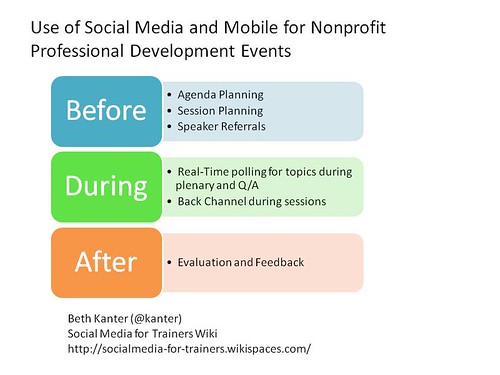Last week, I faciltated a mini-workshop at the Silicon Valley/Peninsula Nonprofit Leadership Forum hosted by Compasspoint. I’ve had the pleasure of working closely with Compasspoint as part of my continuing work as Visiting Scholar at the David and Lucile Packard Foundation. I enjoy it because I get double dose: great ideas about the integration of technology with leadership, training, and capacity building AND the content.
The lunchtime conversation was with Emmett D. Carson, Ph.D., CEO and President of Silicon Valley Community Foundation. His opening remarks and conversation were inspiring to say the least. The use of mobile and social media enhanced the experience beyond having the standard back channel via a hashtag on Twitter, but the substance of his comments resonated.
Moving from A Problem to Solution Frame
He opened with a quote, “Don’t Bring A Knife To A Gun Fight.” He wasn’t advocating violence. He was talking about how nonprofit social service providers were framing the discussion around state budget cuts. He suggested that nonprofits are too focused on talking about the downside of “if we get cut” or “don’t cut my program because it is important” that nonprofit sector is missing an opportunity to frame the conversation around collective solutions and innovation – not problems.
Carson talked about the impact of government cuts in California – and that it is going beyond effecting those in lower income neighborhoods and reaching a broader swath of individuals. For example, the City of San Jose is trying to save money by turning off the street lights in the city. Lack of lighting is associated with higher crime. Suddenly, it impacts people beyond those who are most vulnerable and he pointed out that this is an opportunity to step up the conversation with more people about solutions. “What can a community do for itself?” he asked. He talked about the potential that people and agencies in the room have of creating a movement.
Leading with the Heart
He discussed the topic of regional philanthropy and giving. He urged people in the room to lead with the heart, not the head. He said that the heart wants to know the stories, not the statistics and jargon. Collect the anecdotes and then follow up with the numbers. He also talked about the lost opportunity for continued donor engagement. “Once we get that first check, we say – oh, we’ve got them. Put them on the donor list. The only time we reach out to them is when we ask them for money.” His advice was to schedule “heart time.” – That is meet with your donors and engage with them — share a story that isn’t linked to an ask. What terrific advice for social media strategies too.
He also had some good points about board management. Nonprofit need to think about their board as brand advocates, not a group of people who can’t speak from the heart about the organization or answer questions like “Go ask staff.” Board empowerment and education as advocates is important so they can talk to their neighbors or their Facebook friends about the nonprofit’s work.
Mobile Technology and Social Media and Real Time Learning

I also want to reflect a bit on the use of social media and mobile technology to support nonprofit professional learning at conferences.
In the last two years, Twitter hashtags or what we call the “Back Channel” have become the standard way to integrate social media “During” conferences, particularly for technology crowds. Early adopters are skilled at embracing distraction where attention is conversation.
In contrast, mobile polling offers is a more structured form of interaction. If used creatively, this can help shape programmatic decisions in real-time. We know that the first rule of programs is know the audience – what better way than to know the audience in real time. Using mobile tools to collect and summarize data for real-time decisions opens up all kinds of creative interaction design possibilities to enhance professional learning experiences.
Nelson Layag, my colleague at Compasspoint, shared how they were experimenting with text polls. They used a service called “Polls Everywhere” to set up shortcodes that the audience could text a vote for a topic during discussion as well as share specific questions for the Q/A. There is also Twitter integration. It is fairly simple to use and while not free, it is relatively inexpensive.
As Nelson comments in the video, this particular gathering was a small enough for them to design a simple pilot to test out the technology and learn how they might use it in their annual nonprofit day. The first concept they were playing with was to use it to get real-time feedback to shape the lunch discussion and Q/A. In the future, Nelson envisions being able to use it to gather feedback in real time during lunch to perhaps shape the afternoon’s session topics.
Nelson mentioned that they thought they might need detailed printed instructions on the table, but it more than 50% of the room participated which is a good participation rate. As Nelson notes, “I think that thanks to American Idol, people know how to text vote.”
How are you integrating social media or mobile technology into professional development events and conferences that promote real time learning? How can you use to best enhance learning rather than take away from it? What is needed to be successful?
Beth Kanter is a consultant, author, influencer. virtual trainer & nonprofit innovator in digital transformation & workplace wellbeing.

Leave a Reply